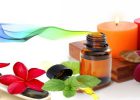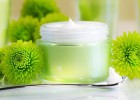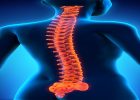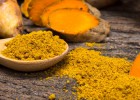Reflexology is a complementary therapy which works on the feet to help and heal congestion in other ‘related’ parts of the body.
Reflexology is a gentle therapy used to help restore and maintain your body’s natural equilibrium.
Reflexology isn’t capable of curing any serious or life-threatening medical disorder and does not claim to cure, diagnose or prescribe; however as an alternative healing method, it is extremely popular with people from all walks of life.
Who Can Benefit from Reflexology?
Reflexology is suitable for all.
Many people use reflexology as a means of relaxing the mind and body and it has been shown to be an effective tool for:
o stress related conditions
o sleep disorders
o back pain
o migraine
o infertility
o sleep disorders
o digestive disorders
o hormonal imbalances
o arthritis
With stress being so prevalent in our society today, this gentle, soothing therapy provides a method of stress release that can help on a physical, mental and emotional level.
How Does Reflexology Work?
By stimulating and applying pressure to the feet or hands, reflexology increases circulation and can promote specific bodily and muscular functions.
The hands and feet are more sensitive than most people realize. A professionally trained reflexologist can detect subtle changes in specific points on the feet, and by working on these points may affect the corresponding organ or system of the body.
Studies have shown reflexology to make improvements in physical and emotional movements, increase self esteem and confidence and improve the ability to stay motivated and improve concentration.
What Happens During a Reflexology Session?
According to Chinese medicine, the soles of the feet hold the sensory nerves of the internal organs that are spread through the body.
During a reflexology session, the therapist applies manual pressure to the feet, working on specific points that connect with different zones in your body.
Pressure is then applied to particular areas of the soles of the feet.
Deposits and imbalances are sought out and released in order to remove blockages and restore the flow of blood and energy.
Reflexology uses hands, fingers, a wooden stick, cream, and oils to stimulate a reflex action in another part of the body.
When properly practiced, reflexology gives a feeling of well-being and relaxation as it stimulates the body to help heal itself.
You should wear loose comfortable clothes that are unrestricting as only your shoes and socks will be removed.
Reflexology – is it safe for everyone?
If you have a heart condition, diabetes, epilepsy, high blood pressure or kidney problems, you should consult your healthcare provider before embarking on a course of reflexology.
Pregnant or menstruating women and people who are bleeding either internally or externally should not receive reflexology
Reflexology massage can be given every day but only for a duration of 45 minutes.
You should begin to experience a positive difference after one or two treatments. Most people experience a feeling of relaxation and wellbeing.
Occasionally people report feelings of nausea, tearfulness or feeling lethargic after a reflexology session. Therapists say this is part of the healing process.
It is important that you report any of these feelings to your reflexology therapist so that he or she can adopt your treatment plan accordingly.
Reflexology should be avoided for at least one hour after meals. As with most massage therapies you should drink plenty of water after treatment.
Many people use reflexology as a means of relaxing the mind and body and it has grown in popularity in recent years as way of relaxing and de-stressing from the pressures we all face on a day to day basis.
Reflexology – Finding a Therapist
To get the best from a reflexology session you should seek out a suitably trained therapist.
Most Spas, salons and health clubs now offer massage treatments and some therapist will carry out a reflexology treatment in the comfort of your own home.




